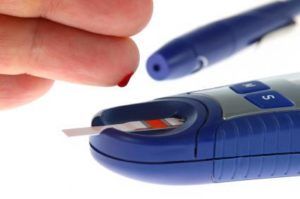Detecting Type 2 Diabetes Before You Have It

Picture From www.jdrf.org
If you are diagnosed with type 2 diabetes this means that your body does not produce an adequate amount of insulin, or does not properly use the insulin your body does produce. Insulin is an important hormone that comes from the pancreas and helps your body’s cells use sugar. Sugar is the energy cells use; essentially it is like gas for your car.
Type 2 diabetes creates many health risks that include heart disease, stroke, high blood pressure, eye problems, kidney damage, nerve damage, infections, gum disease, and problems with pregnancy. Recently, a study may have found indicators of diabetes that will allow one to help prepare for a new lifestyle.
New research confirms that evidence of insulin resistance and changes in blood sugar linked to type 2 diabetes can be measured more than a decade before the disease occurs.
Researchers in the UK followed 6,500 British civil servants who did not have diabetes for about 10 years on average. During this time they repeatedly measured insulin sensitivity and fasting and non-fasting glucose levels. During the average follow-up (10 years), 505 of the participants had developed type 2 diabetes. Researchers followed more than 6,500 British civil servants without diabetes for up to 13 years, during which time they repeatedly measured insulin sensitivity and fasting and non-fasting glucose levels. During an average follow-up of 10 years, 505 of the study participants developed type 2 diabetes. However, the study showed a steady upward trajectory in metabolic changes in the participants that did not develop diabetes. Furthermore, these changes tended to occur at different periods in those who would eventually develop diabetes, and these changes were often very sudden.
Overall the study revealed:
- A steady trend in fasting glucose, sometimes as early as 13 years prior to the diagnosis of type 2 diabetes, with fasting glucose levels rising rapidly three years before diagnosis
- Glucose levels after eating began to increase rapidly starting three years prior to diagnosis
- Insulin sensitivity began to decline steeply five years before the diagnosis
- Beta-cell function — a measure of insulin production — began to increase three to four years prior to diagnosis, as the pancreas tried to compensate for increases in blood glucose by producing more insulin. Insulin production dropped precipitously in the three years prior to a diagnosis of type 2 diabetes.
Also Read
7 Tips for Living With Type 2 Diabetes
3 Easy Tips In Managing Diabetes and Diabetes Diet Plan


